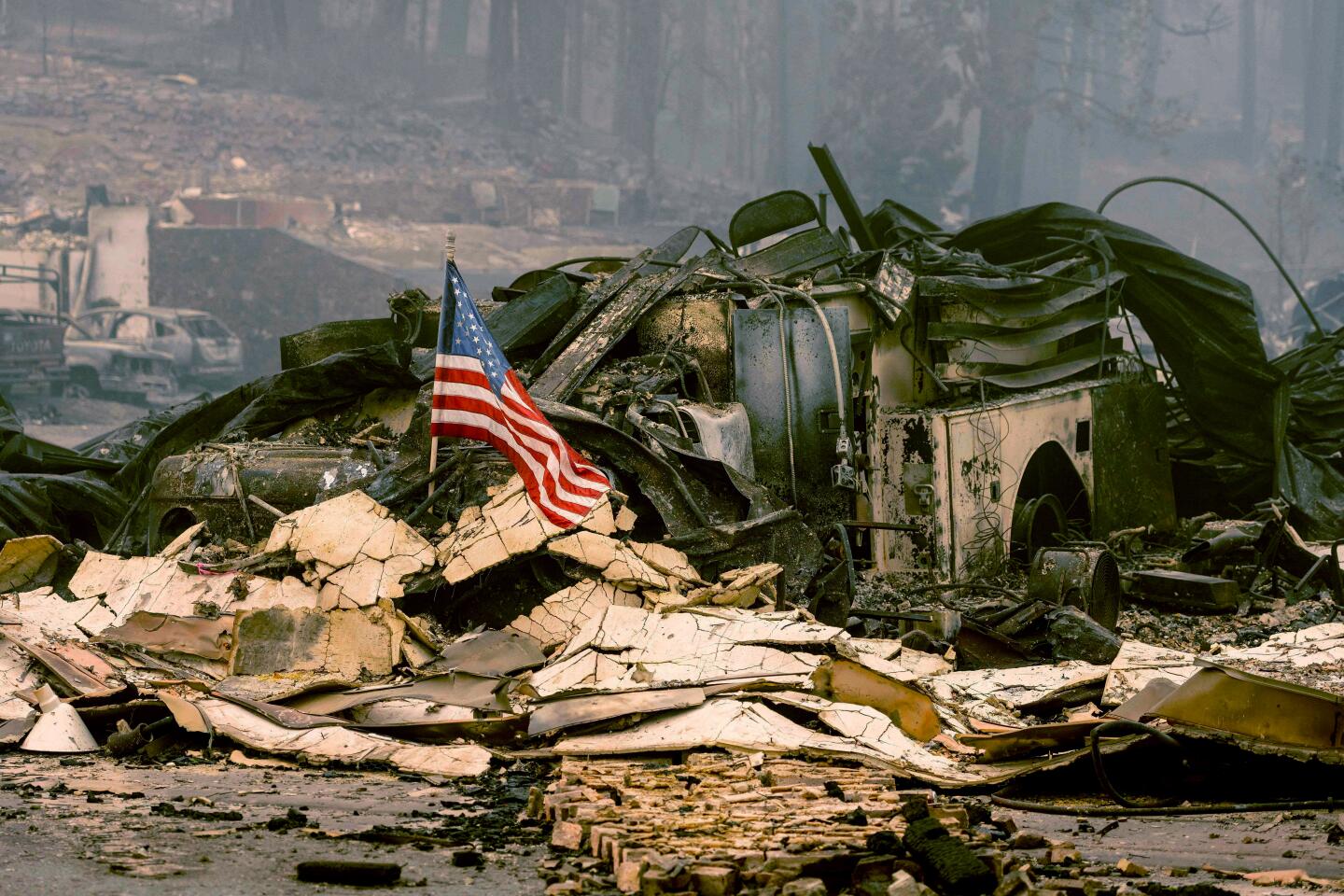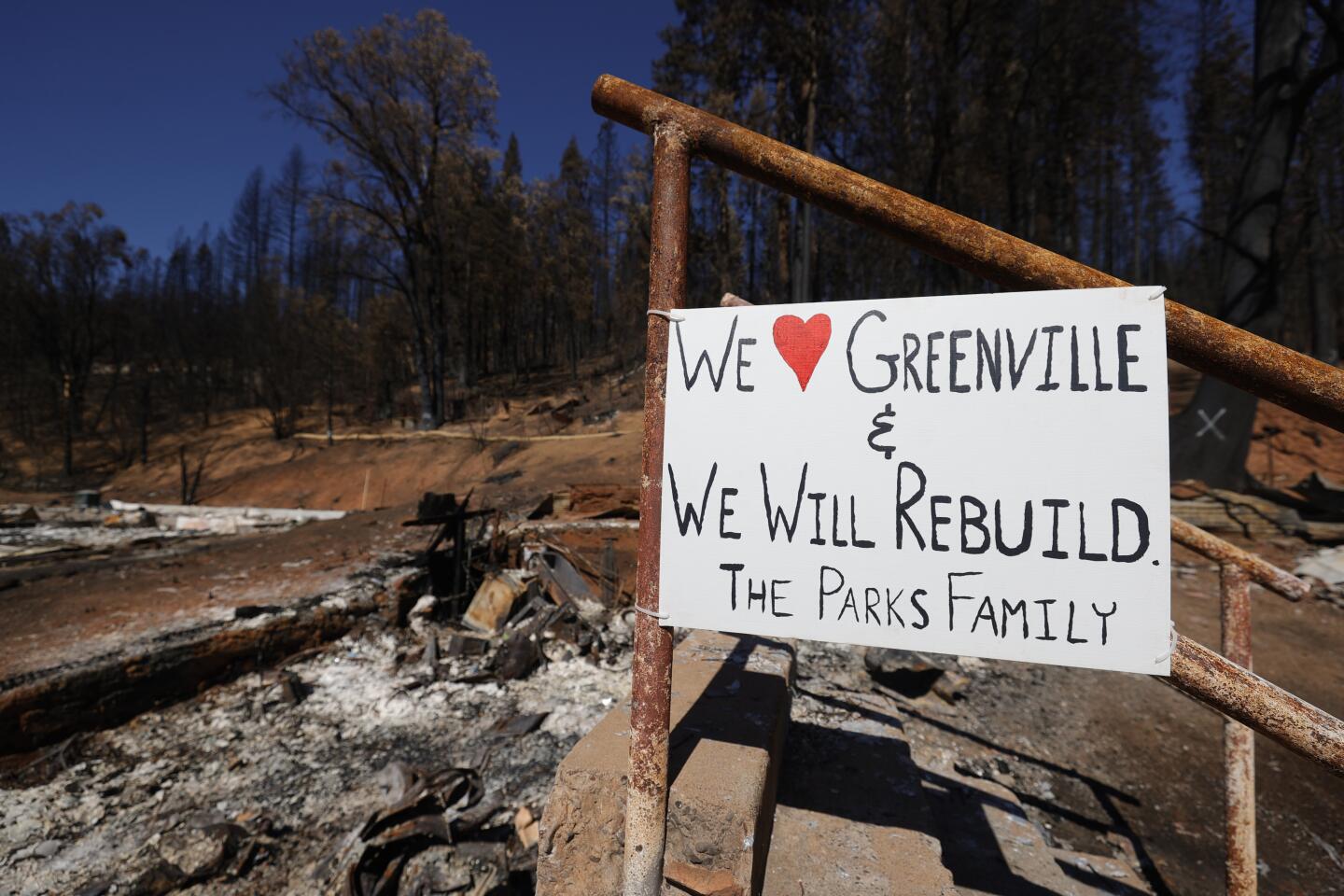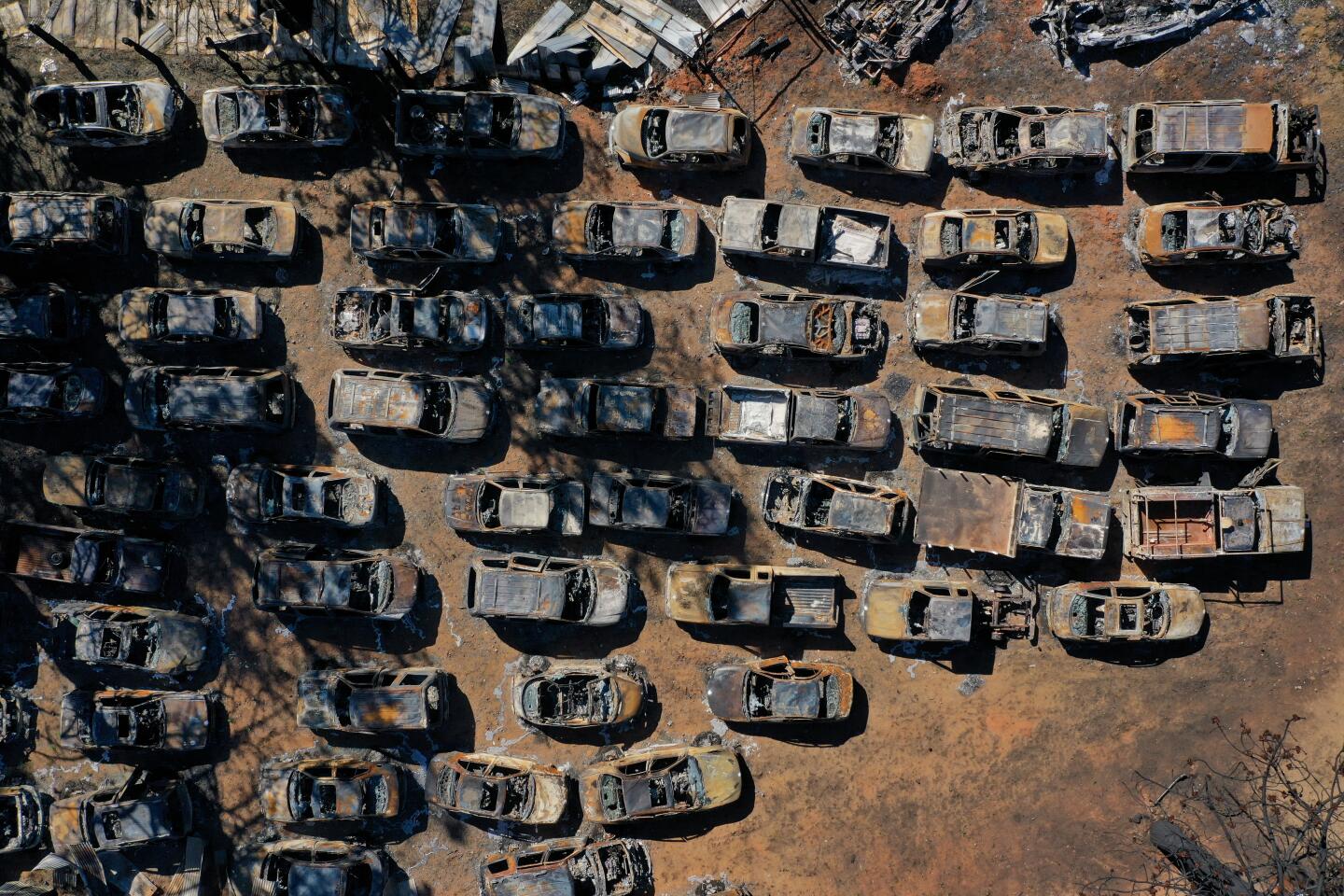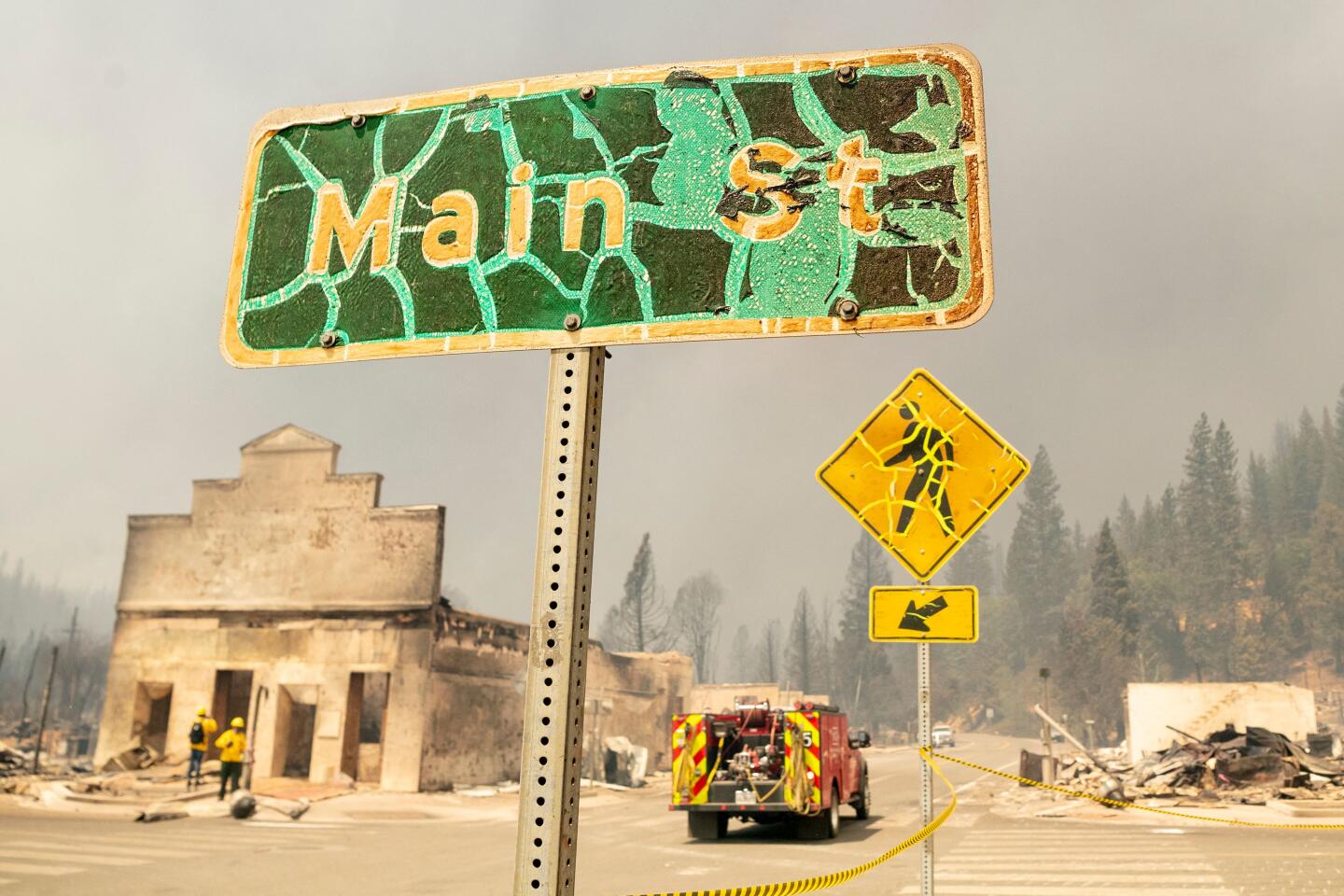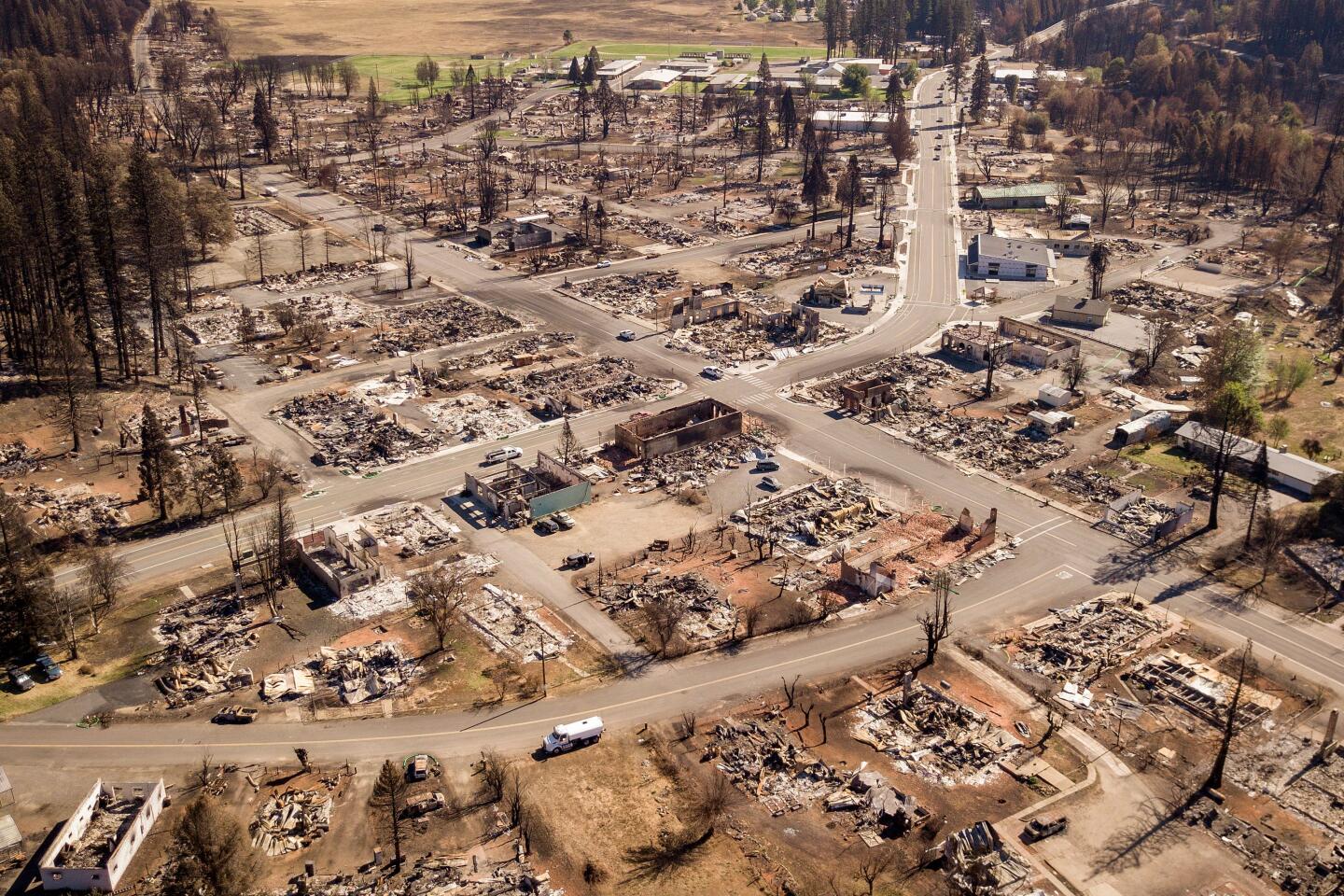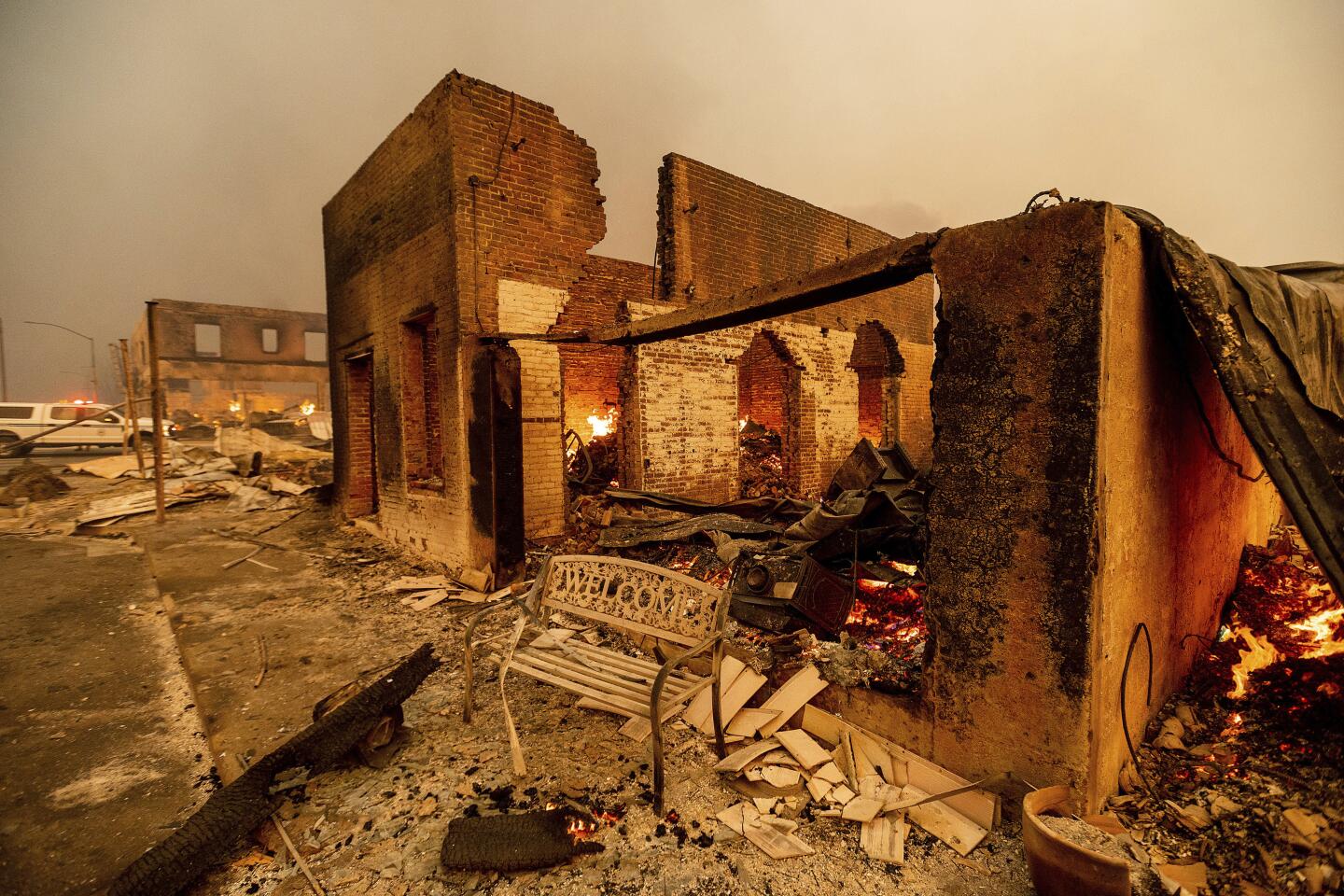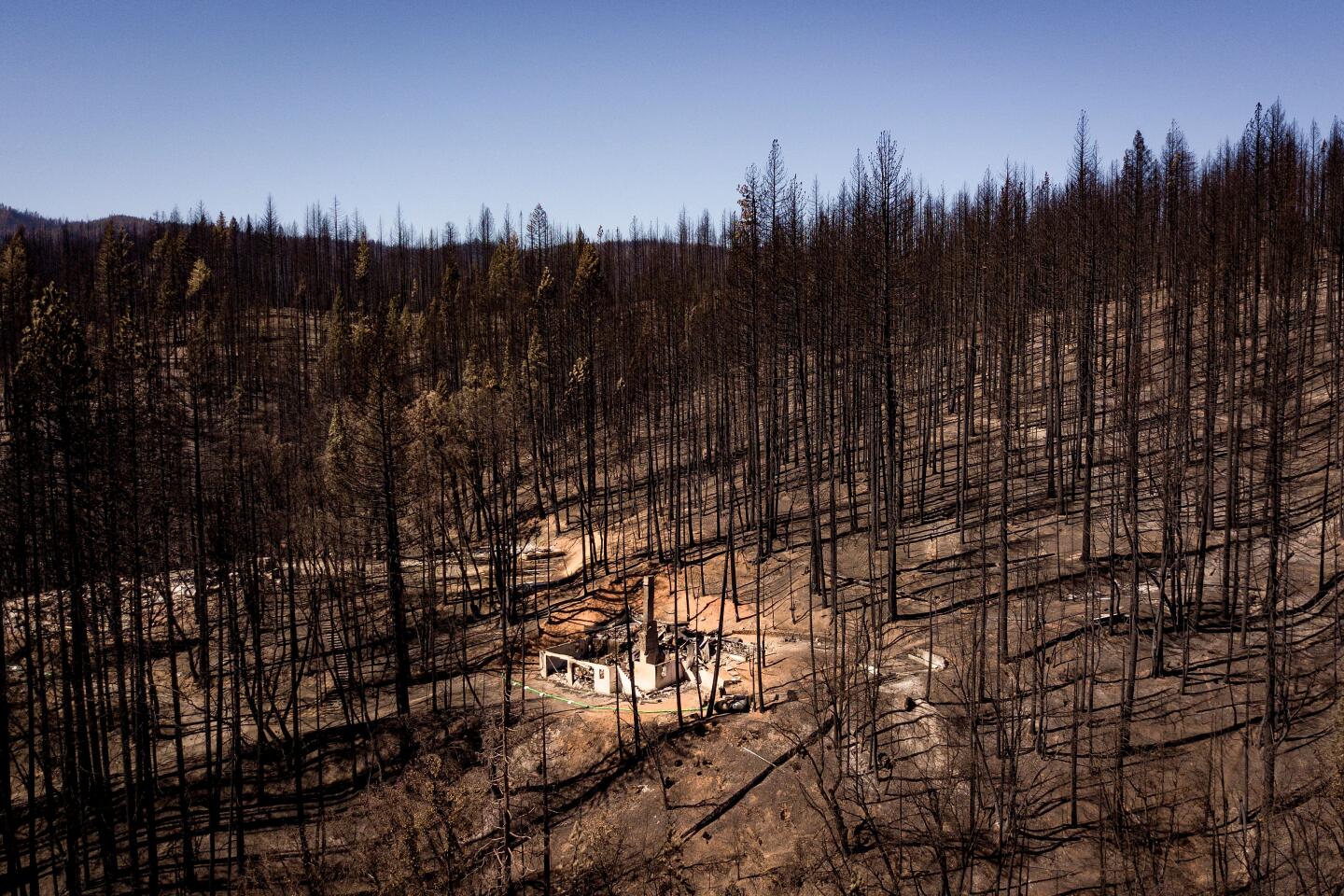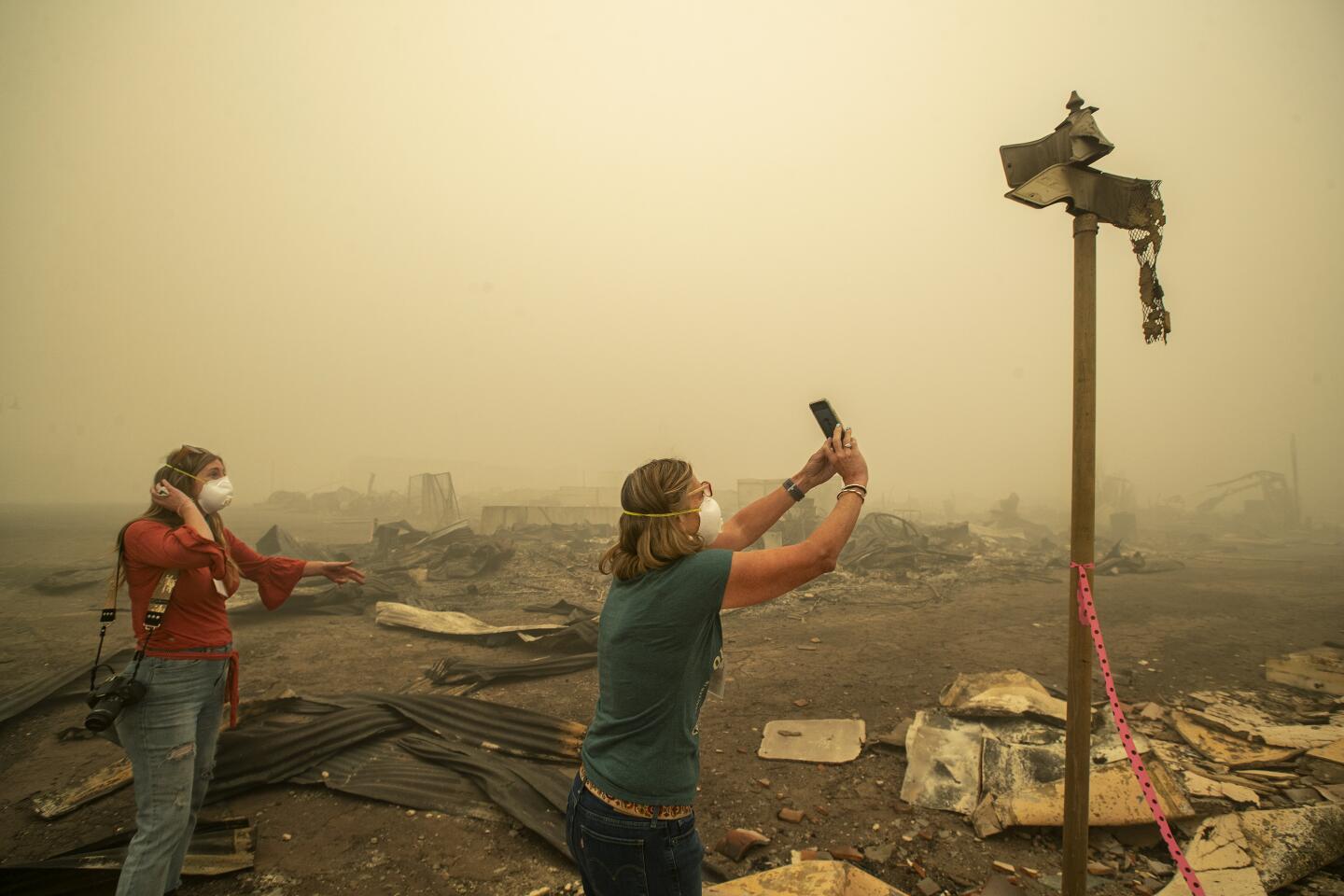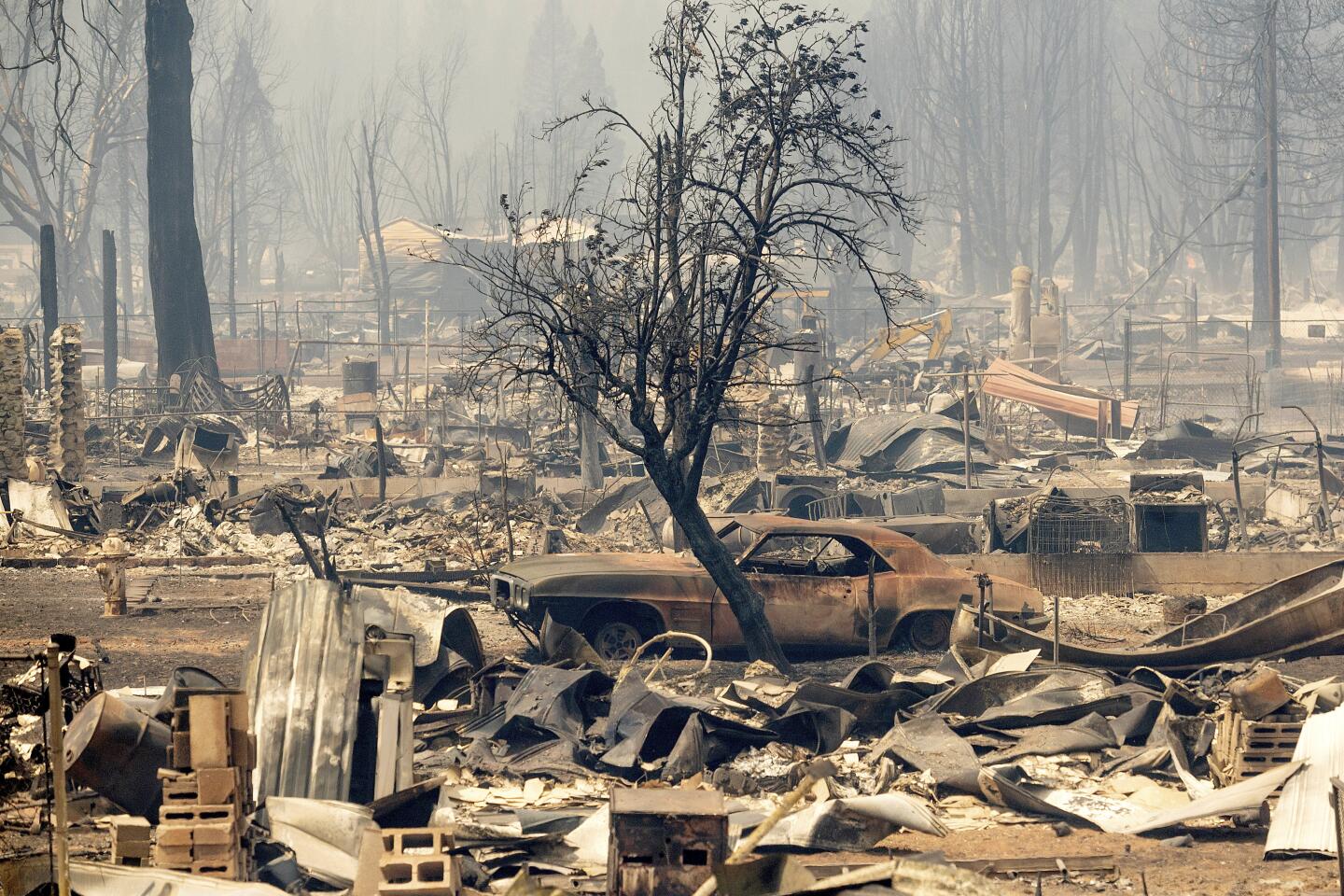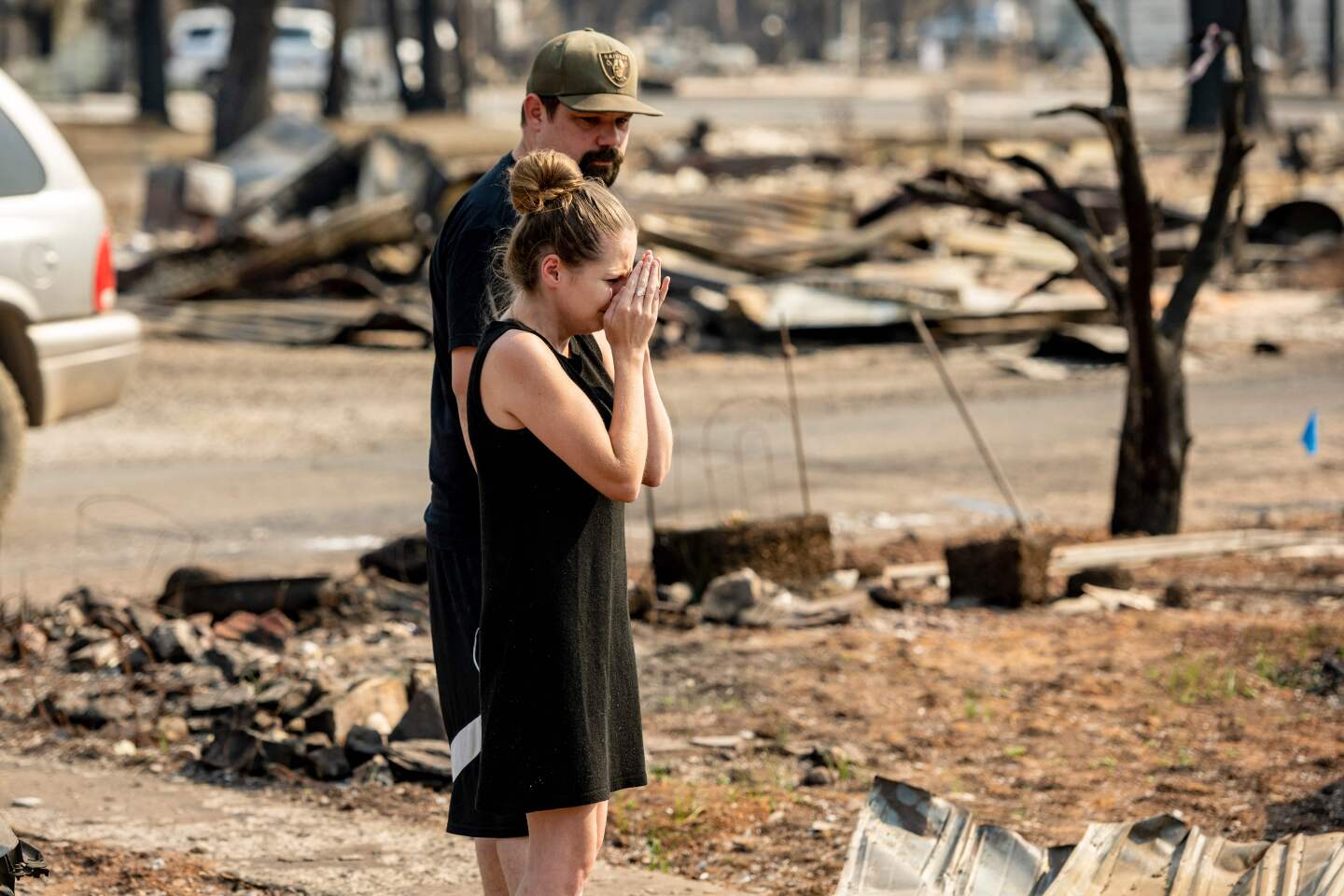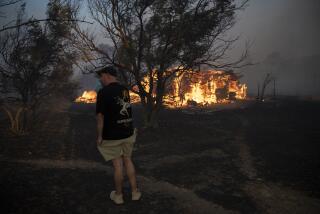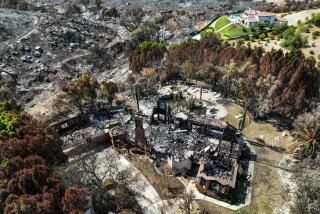GREENVILLE, Calif. — You can’t help but root for Kevin Goss and Kira Wattenburg King: Both are starting over, down-home friendly and clearly, deeply in love.
But there’s another player in their relationship — the mangled, vulnerable town of Greenville — and we worry that makes for a threesome doomed for reasons the heart can’t conquer.
As much as for each other, Goss and Wattenburg King are head over heels for this minuscule mountain community that burned to ash in last year’s Dixie fire. The life they are rebuilding here revolves around saving a place that exists only in their imaginations. Though they, along with a few hundred others, are working ceaselessly to bring back its picturesque Gold Rush charm, climate change is working against them, ensuring that whatever returns will bear little resemblance to what was lost.
Instead, Greenville will be a hotter, drier, harsher place — one where the canopy of evergreens that once shaded its quaint downtown may never regrow, replaced instead by highly flammable shrubland. A place where rivers will be reduced to trickles for much of the year, and where the ownership of that water, which also feeds Southern California, is increasingly contentious.
A place that is likely to burn again within the next decade.
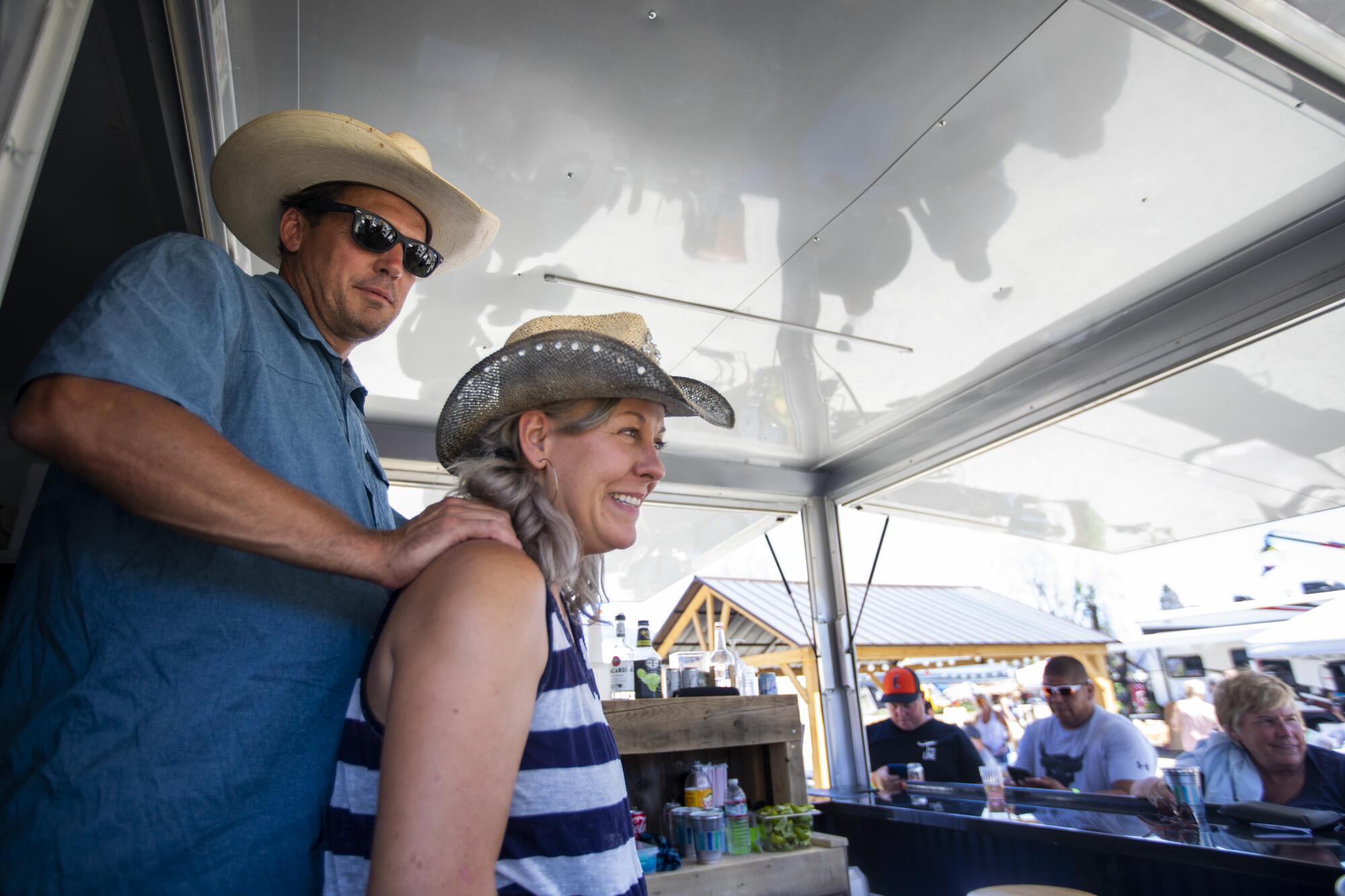
It’s a wheel of tragedy, triumph and bitter reality playing out across fire-prone rural Northern California, where dozens of small towns have been destroyed or severely maimed by wildfires in recent years, and dozens more are being built in dangerous territory. Since the two of us visited Greenville in July, at least three more have joined the painful family of hashtag-strong places where Californians have been chased from their homes by flames. Volcanoville. Klamath River. Weed (again).
Like Paradise and Greenville, they’ll probably try to rebuild too.
Which is why California must begin a conversation now about the next towns that will burn, and on how to break the cycle. The definition of insanity is to keep doing the same thing over and over — building and rebuilding in areas we know are deadly — with the same result: destruction.
If we really want to help our neighbors, we should be honest with the thousands of people like Goss and Wattenburg King who are banking on a dream that science tells us will more likely turn out to be a nightmare. Saving tiny towns such as Greenville is becoming both cost-prohibitive and unconscionably dangerous for first responders, and offers a false sense of security for residents even as the peril of living there explodes.
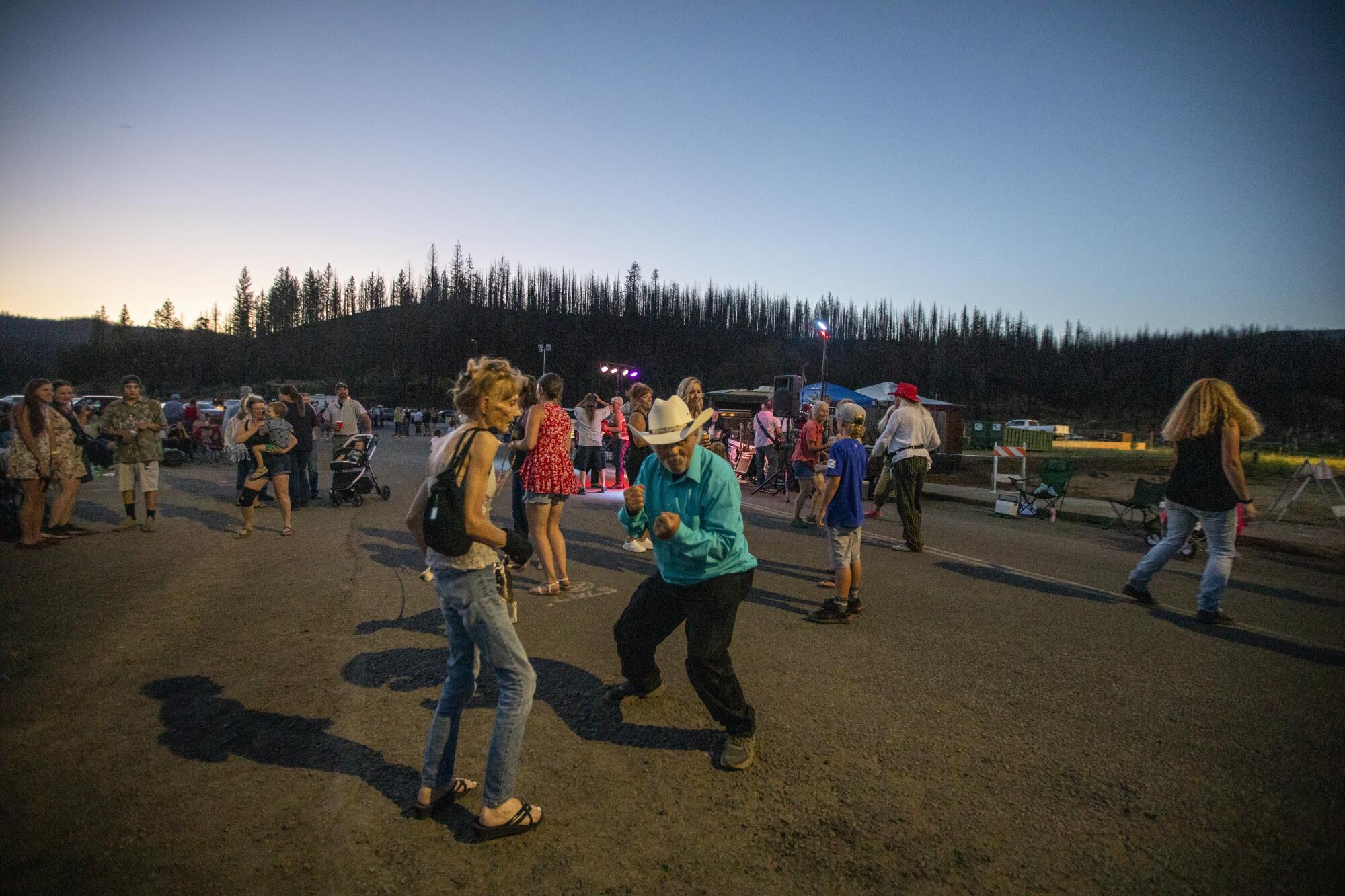
Gov. Gavin Newsom must take action and begin the difficult task of convening Californians to create a statewide land-use plan that will actually answer the hard questions of how and where we will live in coming years.
Karen Chapple, a professor emeritus at UC Berkeley who last year helped write a report on rebounding after wildfire, says our current policies, a hodgepodge of state and local measures, aren’t fixing problems. Instead, they are actually fueling a more dangerous future by creating incentives to bolster the status quo, with little more than “hardening” efforts such as extra sprinklers, better roofing and more defensible space.
Those things help, she says, but “it’s just a matter of time before [towns like Greenville] burn again, and the only reason the homeowners are building in the same place is because the government is paying for it.”
We spent months attempting to find out how much money state, federal and local government, corporations and private entities have promised, paid or will be forced to pay to Greenville. Our napkin math puts it at about $1 billion once all is said and done — through government aid, insurance payouts, lawsuits against Pacific Gas & Electric (whose power lines started the fire), corporate investment and philanthropic donations.
Shockingly, no one in state government could come up with an official figure. Seriously. We made a lot of calls. The best we could get was a California Office of Emergency Services tally of $18 million in emergency funds.
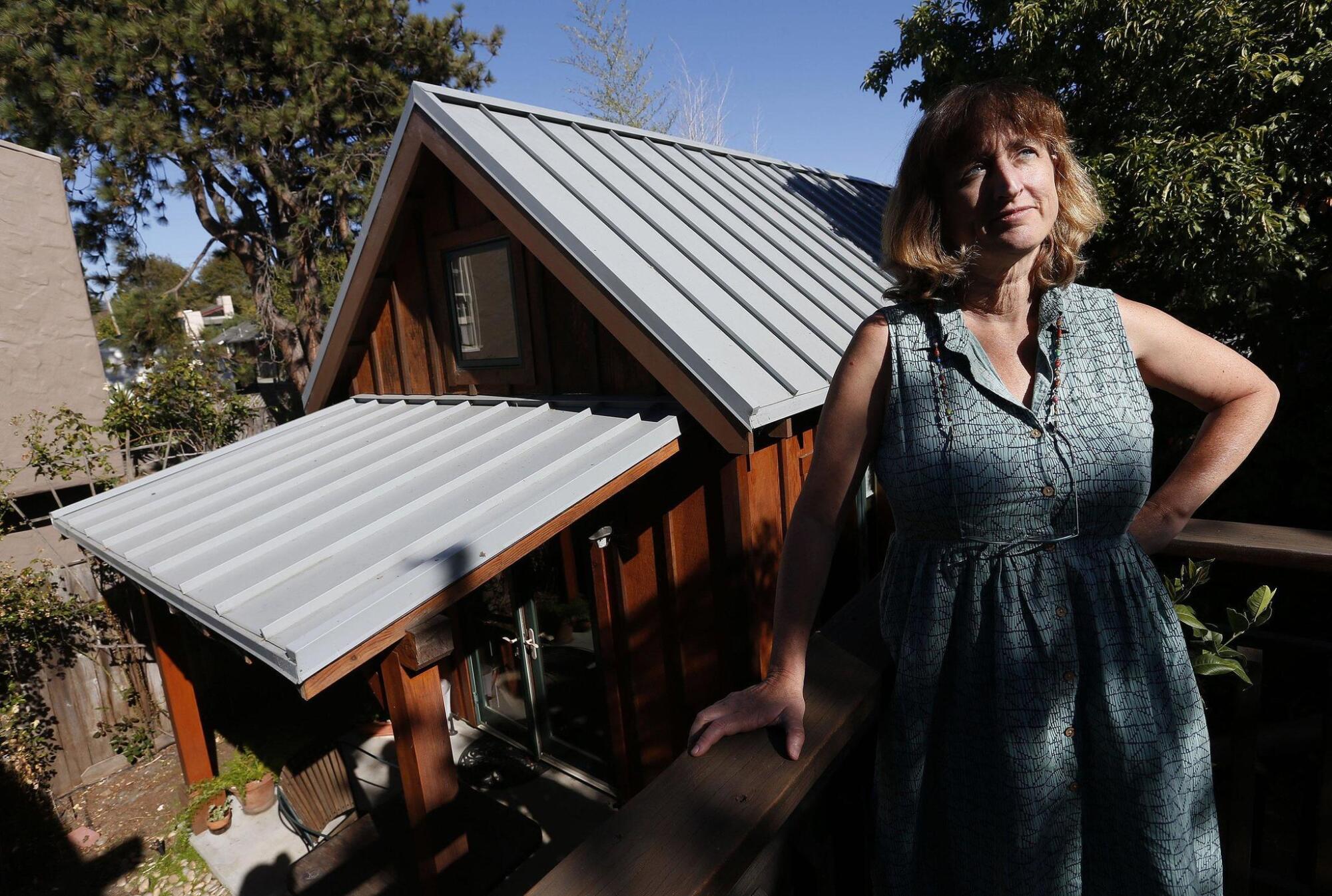
Chapple said that’s typical — no one is really tracking how much we are spending to rebuild these towns. She tried to figure it out as well, and her Berkeley research team gave up because it was so complicated.
We think our estimate is probably low. Even so, how long can we justify $1 billion to save a community where about 300 people have expressed a desire to move back at a time when — at last count —160,000 Californians were homeless and affordable housing in our cities is an urgent need?
Steve Wheeler, a professor at UC Davis who studies land use and climate change, told us that California needs a comprehensive land-use policy led by the state — and by that we mean Newsom. Money is only part of it.
We need a vision not just for protecting watersheds, guarding the environment, thinning mismanaged forests and examining finances. We need one that also encompasses how we persuade people to live in safer places and stop sprawl in perilous ones, and when we will or won’t rebuild towns that burn, flood or are submerged as sea levels rise — all disasters we will see more of as extreme weather continues.
Most urgently and also most controversially, we need state rules that halt building in places we know will be hit by repeated disasters, and set expectations for people who choose to live there anyway.
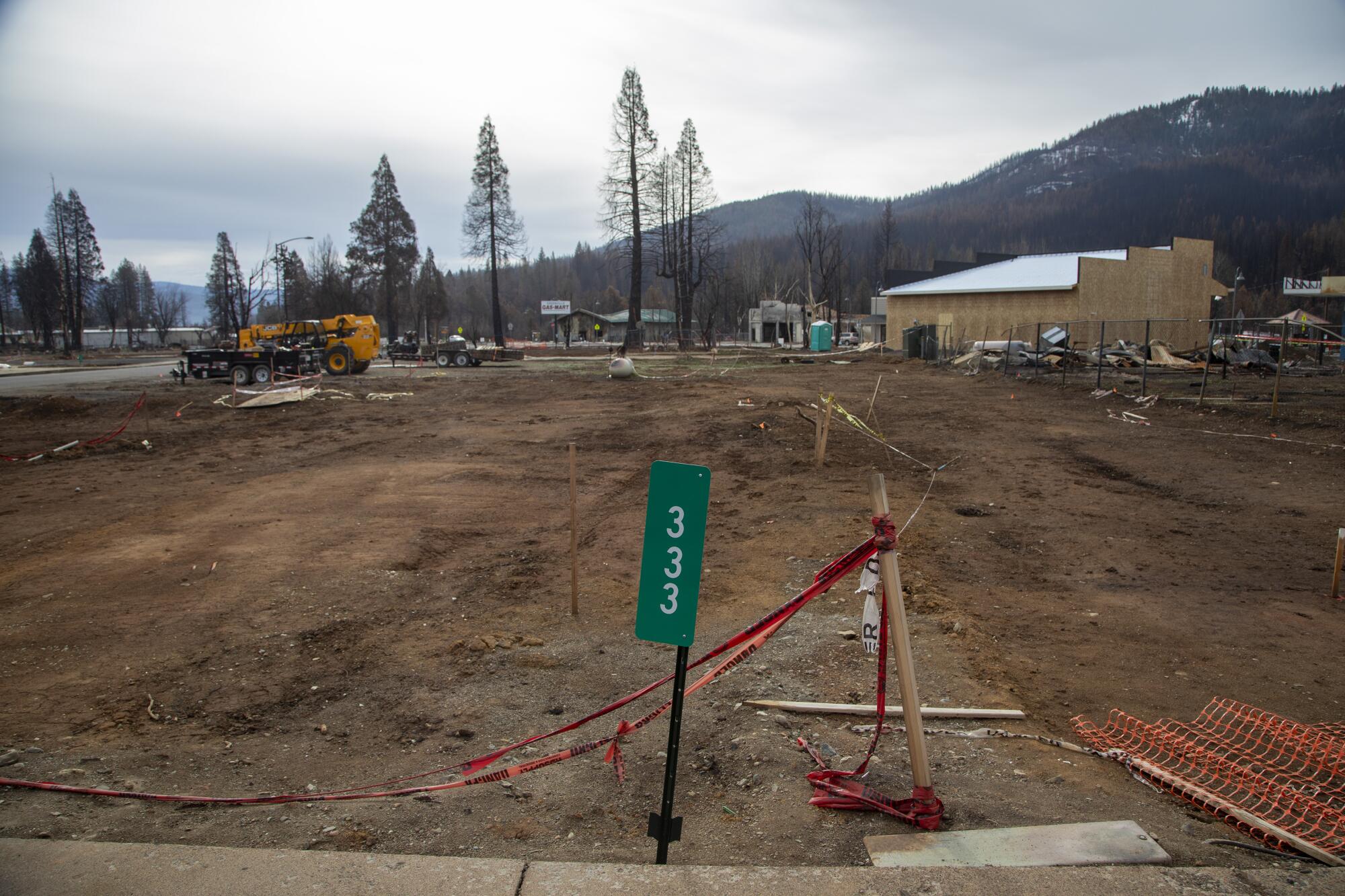
Right now, California does little to discourage developers from slapping up new communities in the path of ruin, leaving most land-use decisions to local jurisdictions despite knowing that the people who move to these new developments in the wildland-urban interface (the WUI, or “woo-ee,” as it’s called), where most high-risk fire zones are found, are often poor, elderly or vulnerable.
But politicians who mess with that local control don’t win elections, especially in Northern California, where it’s not uncommon to hear Newsom compared to a Nazi for his perceived overreach. The prevailing conspiracy theory is that wildfires are part of a socialist plot to drive people into cities where they supposedly can be more easily controlled. Apparently it’s possible to be simultaneously fascist and socialist up here.
Elected officials in more urban areas aren’t any better, trying to preserve what’s left of zoning for single-family homes and protesting infill development as if it’s radioactive. This is especially true in Southern California and the Bay Area, where a persistent shortage of affordable housing has driven up costs so high that working-class people have little choice but to move farther out toward the wildlands.
Given these political dynamics, Chapple calls land-use policy a “third rail” that Newsom “doesn’t seem to want to touch,” though he has taken some action on the urban logjam of affordable housing.
In fact, in a 2019 Associated Press interview, Newsom made clear he favored allowing building in these wildfire zones, citing outdated and romantic arguments about frontiers. “There’s something that is truly Californian about the wilderness and the wild and pioneering spirit,” he said. And at a recent climate summit in New York, Newsom lamented the loss of “lifestyles, traditions” that fire erases when towns burn.
Perhaps Newsom’s views have evolved over the last three horrible fire seasons — at the same event, he railed that climate change and fire suppression are “costing us a fortune. How many hundreds of billions of dollars are we willing to waste every single year because of our neglect?”
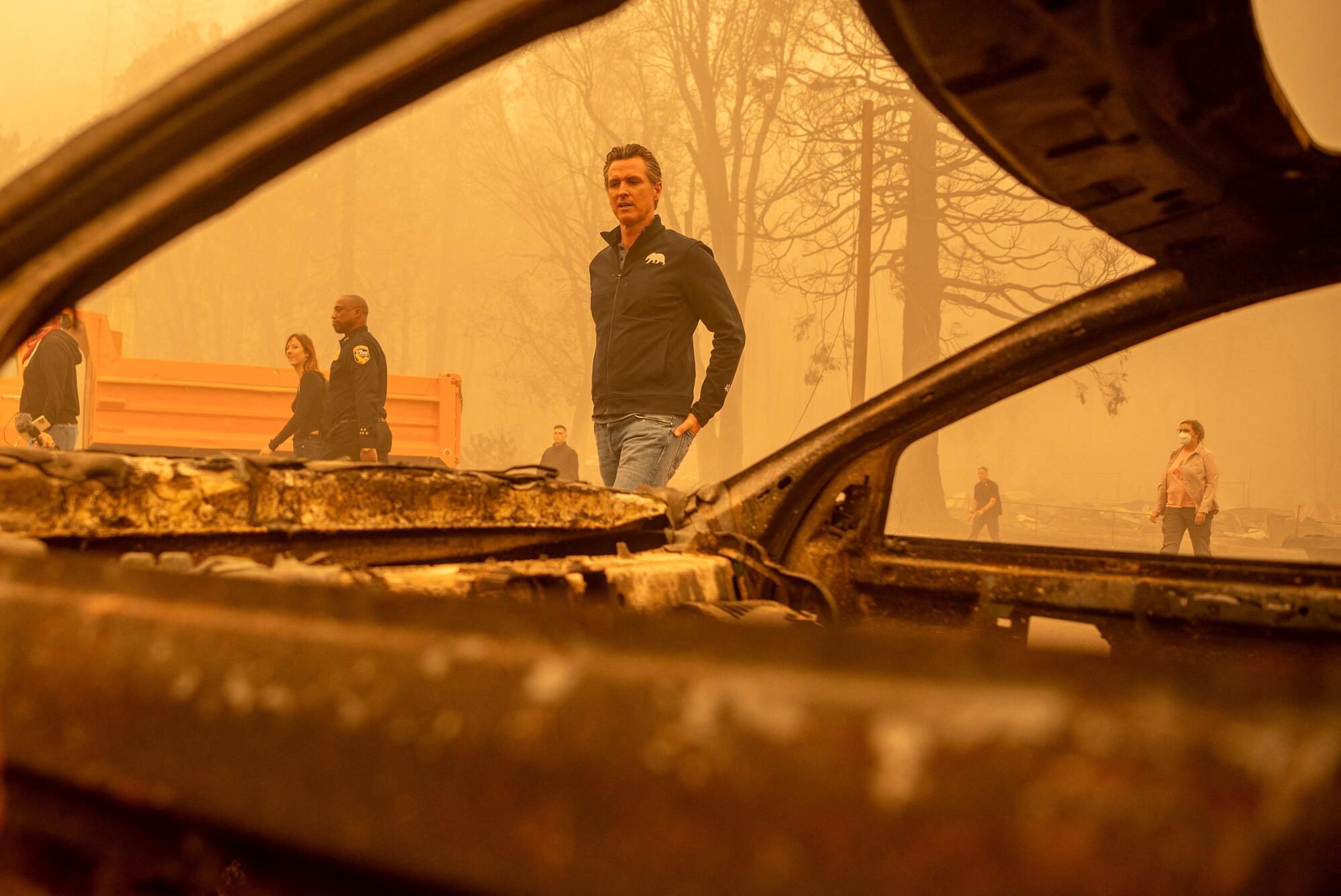
But our policy is still based on a sentimentalized, whitewashed past that isn’t helping our future. We need a discussion of “managed retreats” from areas most prone to wildfires and other disasters in favor of larger, more defensible cities where compact development has the added benefit of being more climate-friendly.
Chapple envisions a possible system where people stay in their communities until fire hits, then government buys them out at a price that allows them to restart in a safer place. Or we could create “resilience nodes” where people build in rural areas with disaster foremost in mind and are willing to accept the consequences for staying if the worst happens — including perhaps forgoing insurance. Greenville is approaching something along those lines.
But this isn’t just about tiny mountain towns.
About 1 out of every 12 homes in California is in a high-risk zone for wildfires, many in the wildland-urban interface, though that estimate is probably low because it relies on outdated 2011 mapping.
That translates to 25% of Californians — or 10 million people — living in danger of fire.
Those homes in greatest peril have a combined assessed value of more than $830 billion. In recent years, California’s home insurance industry has paid out astronomical amounts for wildfire-burned properties. The 2018 Camp fire in Paradise caused an estimated $18 billion in damage, and insurers paid out more than $9 billion in claims (many homes lacked insurance). The 2017 Tubbs fire in Santa Rosa saw more than $8 billion in residential insurance claims.
At the same time, a state study on climate impacts estimates that the wildfire burn area in California will increase by an astounding 77% by the end of this century, with large wildfires becoming 50% more frequent.
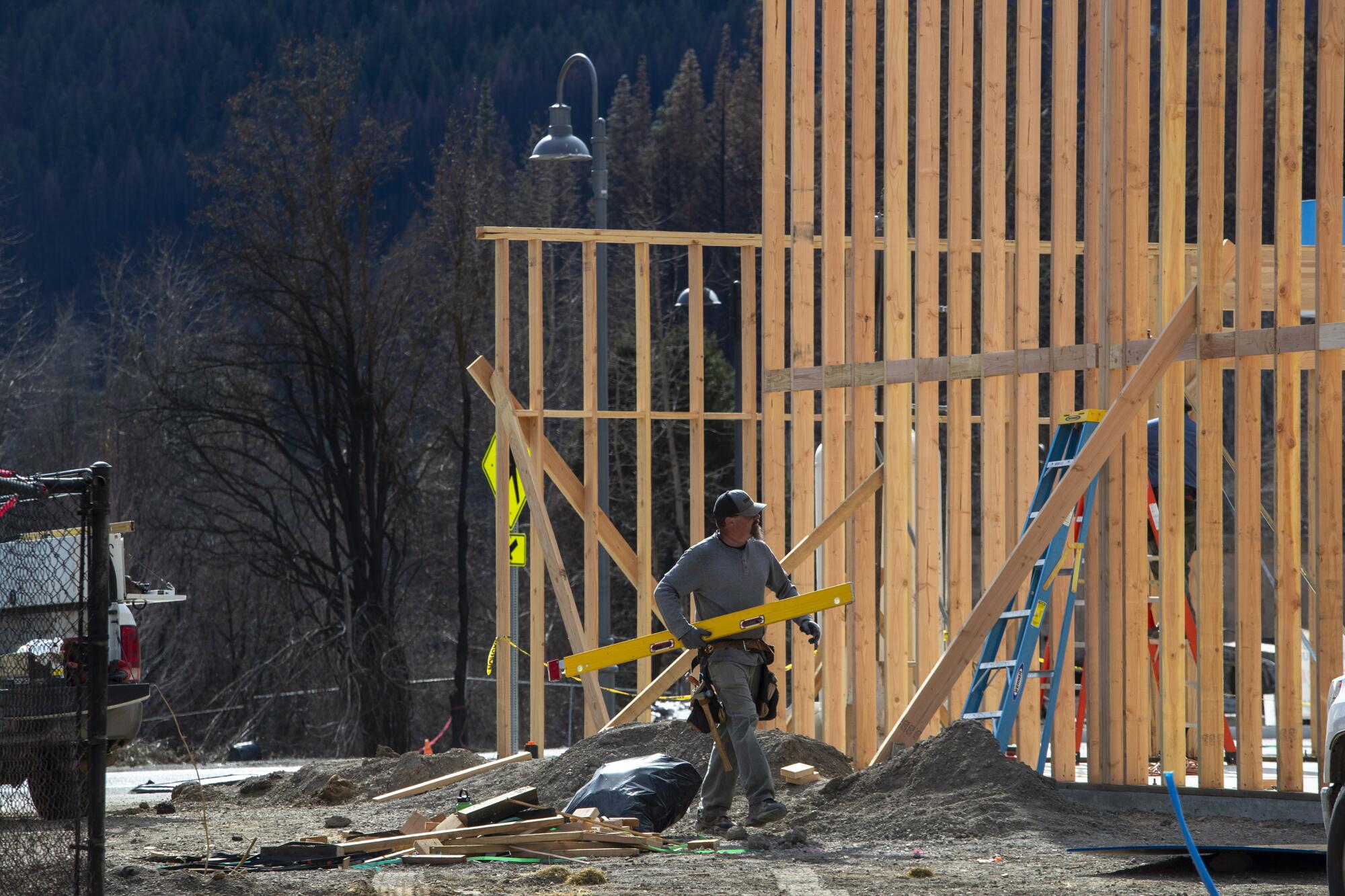
If nothing changes, California is on track to build 645,000 more housing units in high-risk wildfire areas by 2050, according to an analysis by Next10, a nonpartisan group focused on sustainable development. And though housing is a critical need in California, building homes that ultimately burn down — displacing thousands — does little to fix our shortage. Instead it adds to the economic insecurity of Californians who end up buying into what is essentially a pyramid scheme of unsafe real estate, in which the developers are the only winners.
As state Insurance Commissioner Ricardo Lara told us, “We must face the tough reality that a house repeatedly destroyed by wildfires or floods is unaffordable.”

In a not-so-distant future ravaged by climate change, many of Northern California’s rural towns wiped out by wildfires might not get rebuilt at all.
California has taken some meaningful steps to mitigate our wildfire risks. In 2008, the state began adding new requirements for building safety and has since continually strengthened those safeguards.
In 2021, Newsom and state legislators agreed to a historic $536-million package for fire mitigation and suppression, including a plan to increase the dismal pace of forest thinning. The federal government has also promised to increase the pace of better managing its California lands, though researchers estimate it would cost $3 billion annually for 10 years to really get the state’s risks under control, including $1 billion a year for prescribed burns and other clearing.
This year, Newsom pledged $54 billion in a far-reaching climate package meant to “future-proof” California, even as fire season becomes a yearlong threat statewide. Lara’s office also championed a new regulation that will require the disclosure of “risk scores” for people buying in these areas, so they can better understand what they are getting into.
Despite being clear-eyed on the gamble, Wattenburg King, a lithe bottle blond with a smile that reaches deep into her eyes, is determined to restore her family’s historic vacation lodge, a “Dirty Dancing” kind of place that once drew Bay Area revelers with its hot-springs-fed pool and parties that spilled off a big front porch. Earlier this year, she hacked through years of underbrush by the creek by hand, to create a fairy-forest nook for weddings.
Not one for half-measures, she also recently purchased the town’s dive bar, the Way Station, though there is nothing left of it except for its Gold Rush-era walls, which may need to be demolished. She dreams of a roadhouse with “yummy, yummy” food and craft cocktails.
She met Goss right after the fire, when he was looking for volunteers to help him plant flowers around town, just to brighten up what had become a moonscape of gray rubble.
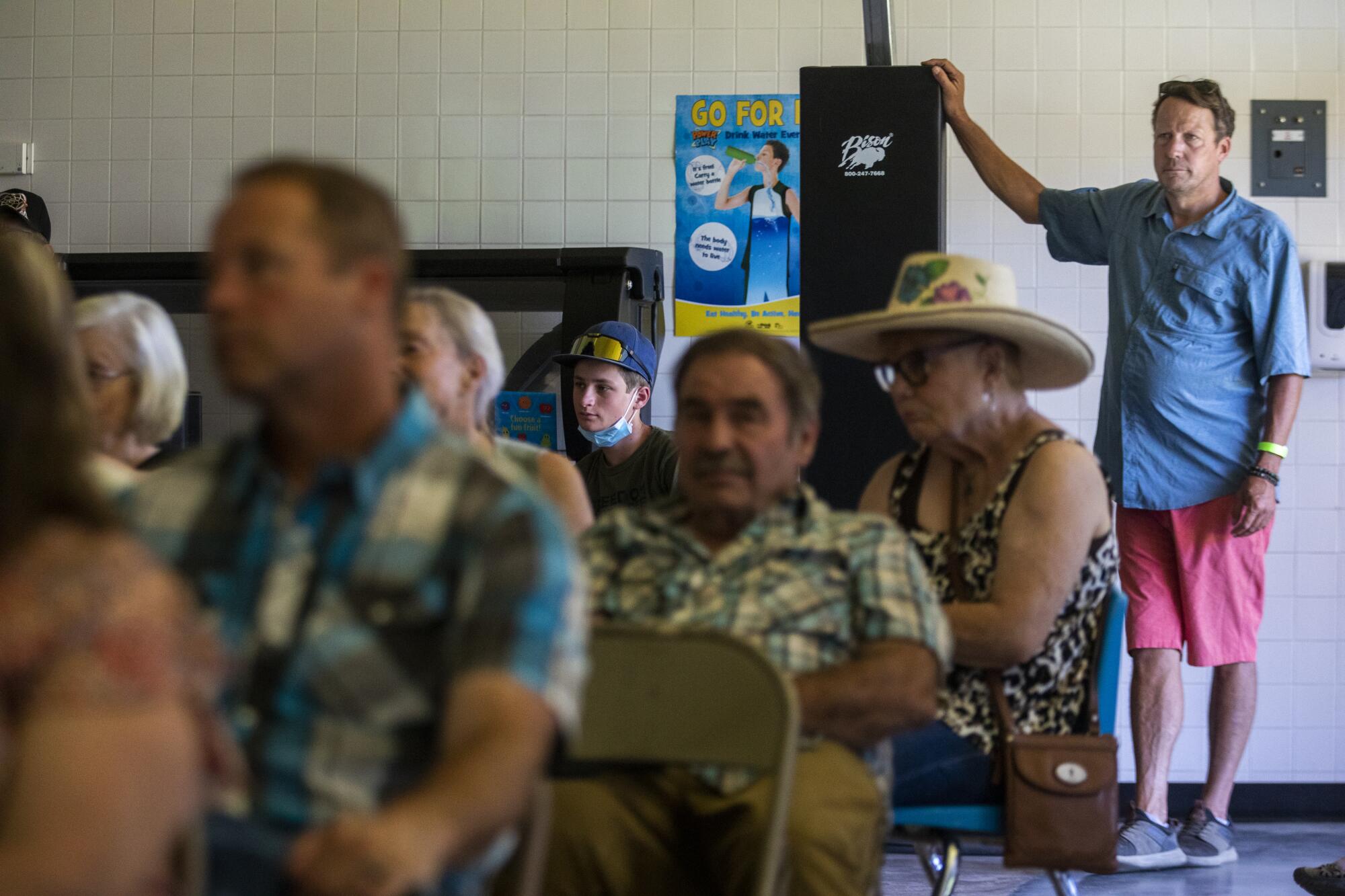
Goss is a Plumas County supervisor whose family ran a pharmacy on Greenville’s main street. When he evacuated, all he managed to save was a computer with prescriptions on it so he could make sure his neighbors could get their refills.
He was one of the first people to see Greenville after it burned, when the sky was still orange with fire and the air so smoky it carried an acrid taste. His shock blunted his sorrow as he tried to absorb this generational catastrophe, picking through the still-hot remains of his store to find any semblance of a life now gone — some old glass medicine bottles, a toy he played with as a kid.
“I have to keep my ‘build it and they will come’ view,” Wattenburg King told us a few weeks ago, sitting in a rocking chair next to Goss, looking toward the tree line a few dozen yards away where the flames miraculously stopped just out of sight.
“Pioneers,” Goss said of their current state, adding later that “it’s gotten to the point now where the fire was the easiest part.”
Their determination brought to mind the famous Emily Dickinson line: “The heart wants what it wants.”
We want Goss and Wattenburg King to win this round against Mother Nature. Greenville is already being rebuilt, in a thoughtful and forward-thinking way, and we don’t want that to stop. But the truth is, as Washington Gov. Jay Inslee recently put it, we are living in the “Age of Consequence” when the fallout of our parents’ choices and our own have caught up with us — and we owe it to future generations to set sentimentality aside.
Newsom, as the leader of our state, must begin this excruciating conversation — because we can no longer afford to remake the past, even if we loved it.
More to Read
Sign up for Essential California
The most important California stories and recommendations in your inbox every morning.
You may occasionally receive promotional content from the Los Angeles Times.
